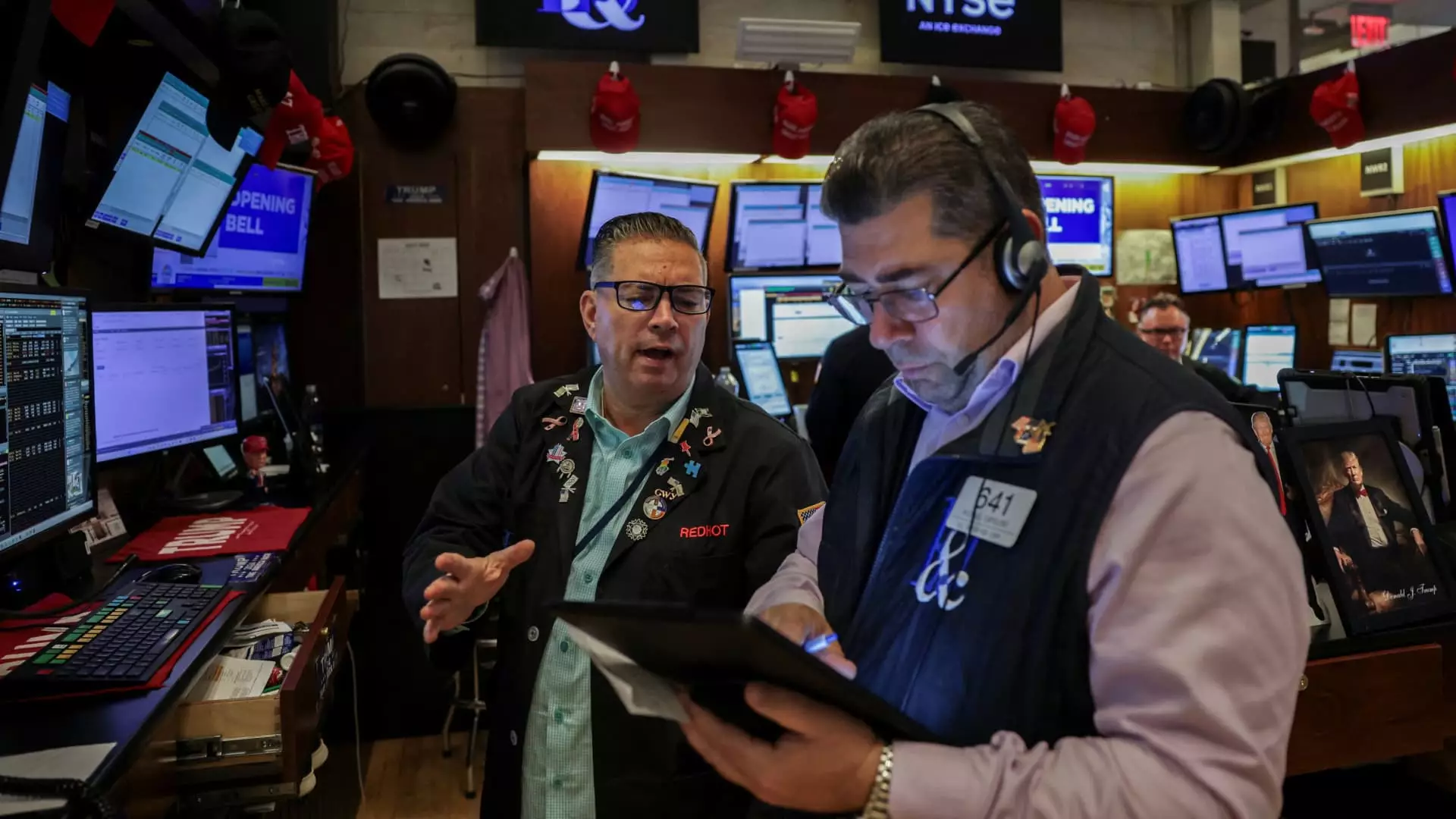In the recent tumult of stock performances, a glaring pattern emerges: investors are increasingly skeptical of corporate narratives that mask underlying vulnerabilities. Netflix, a titan of media, exemplifies this skepticism by warning of a significant decline in operating margins in the latter half of 2025. Despite beating revenue and profit expectations, the streaming giant’s caution over rising content amortization and marketing costs signals an unsettling reality—content-driven growth is becoming prohibitively expensive, and the assumed flexibility of digital content margins is quickly eroding. This serves as a stark reminder that even market leaders are not immune to the economic headwinds of overspending and inflated valuation models that have dominated the digital age.
Meanwhile, the biotech sector, exemplified by Sarepta Therapeutics, offers a stark contrast: rapid gains are often followed by dramatic decline, as seen after its 24% plunge post-tragic news of a patient’s death during a Phase 1 trial. This stark volatility demonstrates that innovation, even when promising, remains heavily dependent on regulatory and safety uncertainties, which can swiftly undermine investor confidence. It underscores a broader truth—no matter how innovative, biotech stocks are fundamentally fragile, subject to the whims of both scientific outcomes and ethical concerns.
Resource Corporations in Transition—A Double-Edged Sword
Chevron’s recent surge, following a legal victory over Exxon Mobil related to offshore assets in Guyana, underscores the ongoing global scramble for resource dominance. This is not merely a success story but also a reflection of the geopolitical and economic conflicts that underpin the energy sector. Winning such disputes allows Chevron to bolster its strategic position, yet it also highlights how much control over resource assets rests in legal and political machinations rather than market fundamentals. The broader implication is troubling: markets continue to reward short-term gains derived through legal wins and asset acquisitions rather than sustainable innovation or efficiency.
Additionally, the rise of companies like Schlumberger and the forward movement in energy stocks signal an acknowledgment—at least from market insiders—of the continuing importance of fossil fuels amidst global climate debates. This reinforces the uncomfortable reality that market priorities are often dictated less by environmental sustainability and more by entrenched economic interests. The liberal center should be critical of this; it reveals how market forces often lag behind societal needs, pushing us further into environmental insecurity under the guise of economic progress.
Financial Sector’s Balancing Act—Caution Amid Optimism
The financial sector presents a mixed picture. On one end, stalwart institutions like Charles Schwab and Interactive Brokers demonstrate resilience, surpassing expectations and signaling steady confidence among investors seeking stability. Their performance suggests that investor appetite for tested financial services remains strong, even in turbulent macroeconomic conditions. However, the cautionary tone is evident in Western Alliance’s cautious downtick following a strategic overhaul. Their decision to unify divisions to reinforce brand cohesion might be a prudent stand for longer-term stability, but it also points to an underlying fragility in the regional banking sector—a sector heavily exposed to interest rate fluctuations and economic uncertainties.
More concerning is the emerging narrative surrounding crypto-related stocks. The passage of a major crypto bill in Congress ignited a rally in companies like Coinbase and Circle, yet this optimism may be misplaced. The digital currency realm remains highly volatile, and increased regulation could be the true catalyst for future instability. The recent surges serve as a speculative bubble sentiment, driven by regulatory headlines rather than genuine market fundamentals. As a center-right libertarian, I see this as a temporary respite—a misguided confidence in government intervention that could ultimately stifle innovation and expose investors to enormous risk when the hype dissipates.
Strategic Opportunities for Market Stewards
Amidst the ebb and flow of these market signals, a critical opportunity arises for pragmatic investors and policymakers: focusing on companies with tangible, sustainable competitive advantages rather than short-term trends. The rise in industrial giants like 3M and Charles Schwab demonstrates that innovation in operational efficiency and prudent financial management remains the backbone of resilient growth. These companies are not merely riding waves of hype but investing in core competencies and adjusting to changing economic realities.
Moreover, the underlying theme of these market movements is the necessity for a balanced approach—embracing technological innovation and resource development without losing sight of fiscal responsibility and ethical considerations. As markets react to geopolitical disputes, regulatory shifts, and technological breakthroughs, the savvy investor must view these signals through a lens that values stability and long-term growth over superficial optimism fueled by speculative mania. While markets will continue to oscillate, the true power lies in strategic resilience—an approach rooted in prudence, skepticism, and a commitment to sustainable innovation.

